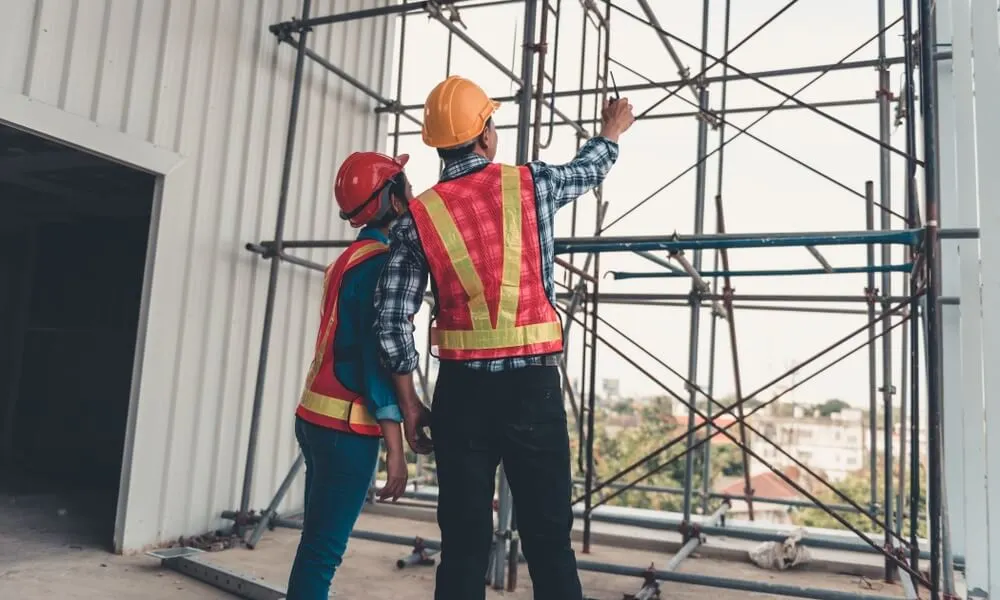In the challenging world of construction and maintenance, safety is paramount. An essential aspect of this involves regularly inspecting scaffolding – a common structure on many worksites. In our blog post, we delve into the significance of these inspections and provide a step-by-step guide on conducting them effectively.
Scaffolding inspections are more than just a regulatory requirement; they are vital to on-site safety protocols, protecting workers who must navigate heights to carry out their tasks. If these structures are not correctly installed, maintained, and inspected, they can become hazards, leading to potentially severe accidents and injuries.
Whether you’re a site manager, a health and safety officer, or a construction worker, understanding how to inspect scaffolding effectively and why it’s crucial can help ensure a safer work environment. Stay with us as we unpack the scaffolding inspection process, explain the vital elements to check, and underline the importance of thorough inspections in workplace safety.
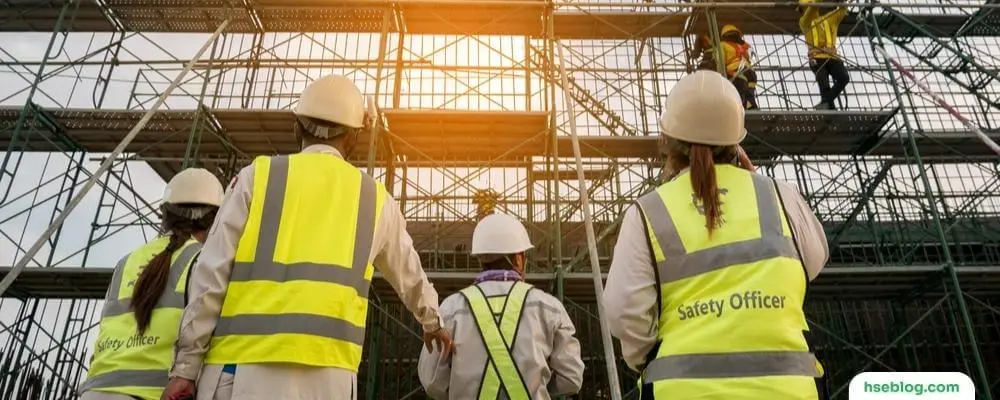
Scaffolding Inspection and Why It Is Important?
Scaffolding inspection is a critical process that involves a comprehensive examination of scaffolding structures to ensure their fitness and safety for use. Given the inherent risks associated with working at height, regular inspections are essential to safeguard the health and safety of workers. These inspections identify and address potential hazards or structural deficiencies that could lead to accidents. While these formal inspections don’t replace the need for pre-use checks or routine maintenance, they supplement them by providing an added layer of safety verification.
As per the Work at Height Regulations, construction scaffolding (where a 2 m or more fall could occur) must undergo weekly inspections. These inspections, as guided by the Construction Design and Management (CDM) Regulations, require the following details to be documented:
- The identification and contact information of the person for whom the inspection was carried out
- The location of the scaffolding inspected
- A detailed description of the scaffolding inspected
- The date and time of the inspection
- Details of any identified potential risks to health or safety
- Actions taken in response to identified risks
- Details of any further action considered necessary
- The name and position of the person making the report
Importantly, these inspections should be carried out by a competent person with adequate knowledge, training, and experience relevant to the type and complexity of the particular scaffold. This competence may have been assessed under schemes such as the Construction Industry Scaffolders Record Scheme (CISRS) or through experience in scaffolding work complemented by additional training for the specific scaffold configuration being inspected.
In certain cases, a non-scaffolder with the necessary background experience, such as a site manager who has attended a suitable scaffold inspection course, may be considered competent to inspect a basic scaffold. While there is no legal requirement to use visual tag systems, it is one way of supplementing inspection records and confirming that the scaffold has been checked before use.
In summary, scaffolding inspections are vital for ensuring scaffolds’ safety and structural integrity, thereby preventing accidents and protecting the lives of those who work at height.
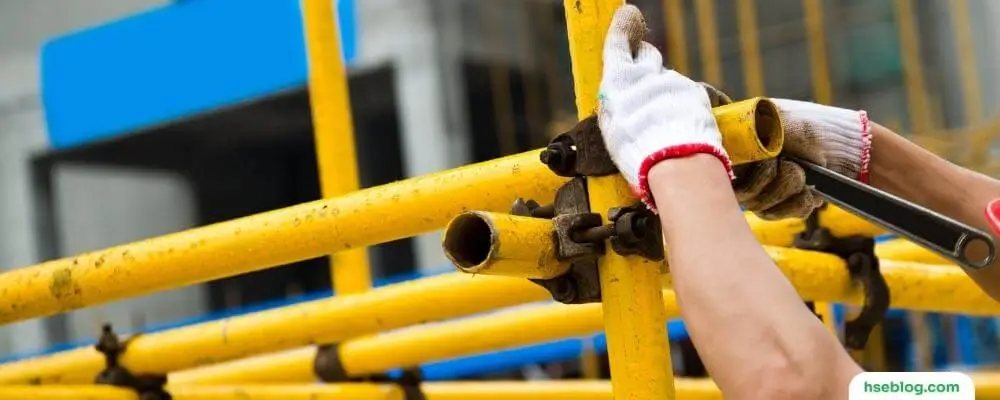
OSHA Scaffolding Inspection Requirements
From 2013 to 2015, scaffolding citations have been some of the most frequent violations recorded during OSHA inspections. Each year there are thousands of scaffold-related violations, ranging from uninspected scaffold installations to overloading scaffolding beyond the maximum weight capacity.
While posting OSHA-compliant scaffold safety signs can alert workers to the potential danger of unfinished scaffolds and their safe use, scaffolding must be inspected periodically as OSHA requires. OSHA sets many requirements to ensure a thorough inspection. OSHA’s Inspection Procedures for Enforcing Subpart L, Scaffolds Used in Construction – 29 CFR 1926.450-454 establishes the methods for scaffold inspections.
OSHA inspections are prioritized based on risk assessment. The greater the potential danger to a worker, the higher priority an inspection is to OSHA. For example, if someone were to report scaffolding supported by loose bricks or cement blocks, or if workers were found on scaffolds during a storm or windy conditions, OSHA would inspect that worksite as a high priority.
Under OSHA standards, all scaffold parts, including fittings, beams, ropes, and frames, shall be periodically inspected before scaffold use. Scaffolding inspection requirements for periodic inspection must be carried out by a competent person who can identify hazards and has the authority to take prompt corrective measures to remove or avoid a hazard. Copies of scaffold specifications and drawings by engineers must be available to employers and inspectors.
Other scaffolding inspection requirements include providing fall protection equipment to building scaffolding workers or taking it apart. For all of the standards and scaffolding inspection requirements, visit OSHA.gov.
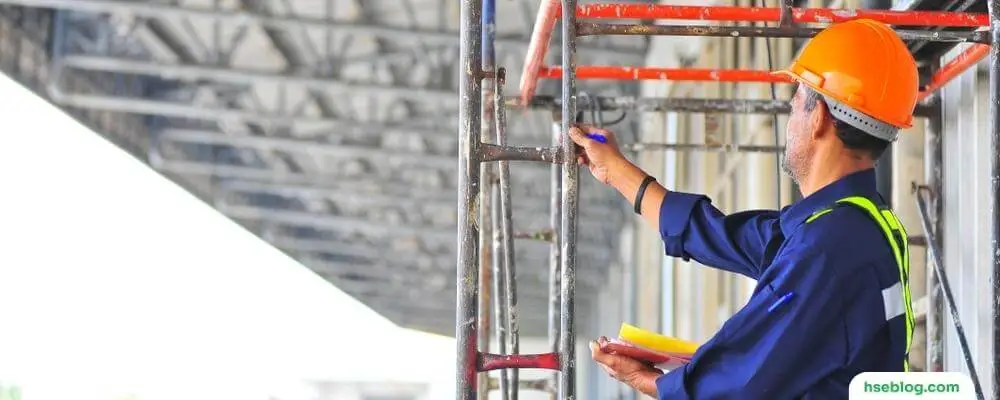
How to Do Scaffolding Inspection?
To ensure the safety of everyone involved, scaffolds must be inspected by someone with a deep understanding and experience in working within these types of hazardous environments. This individual should receive proper training before being assigned such an important task; if there is ever any found issue during inspection – like improperly secured harnesses or poor access ladders– this person has authority over demand that all necessary corrective measures be taken immediately. Here’s a detailed step-by-step guide on how to do a scaffolding inspection:
1. Getting Prepared
Before physically inspecting the scaffold, ensure you’re adequately prepared. This involves wearing the appropriate safety gear to protect you while inspecting the scaffold. This typically includes a hard hat to protect you from falling objects, a high-visibility vest to ensure you’re easily visible to others working on or around the scaffold, safety boots to protect your feet and provide better grip when climbing on the scaffold, and gloves to protect your hands.
You should also carry an inspection checklist, a physical or digital document on a device. This checklist will guide you throughout the inspection and ensure that you remember to check all key points.
2. Documentation Review
Before the actual physical inspection, reviewing all relevant documentation is vital. This step helps you understand the intended design and structure of the scaffold. The documents may include the scaffolding design plans, which illustrate how the scaffold should be built, and previous inspection reports, which can provide insight into any historical issues or recurring problems. You should also review safety protocols to remind yourself of the safety standards and procedures that should be adhered to.
3. Scaffolding Build Inspection
The first step in the physical inspection involves checking the assembly of the scaffold. You should compare the scaffold to the design plans to ensure it has been constructed correctly. Confirm that the scaffold is erected on solid and level ground, as uneven or unstable surfaces can lead to scaffold instability or even collapse. Check that the scaffold structure is fully plumb (straight up and down) and level; leaning to one side could indicate a problem with the foundation or the scaffold’s assembly, potentially resulting in accidents.
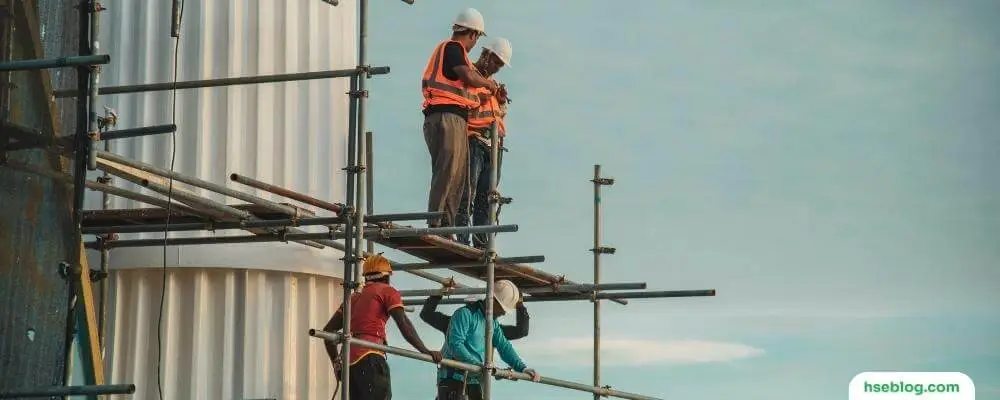
4. Hazards Around the Scaffold
This step involves identifying potential hazards in the scaffold’s immediate vicinity. These hazards could interact negatively with the scaffold and cause accidents. For instance, power lines can pose a serious risk of electrocution, so they should be de-energized, or the scaffold should be erected at a safe distance from them. Also, ensure that no materials or tools within 10 feet of the scaffold could fall and cause injuries. Similarly, other buildings, unstable ground, or adverse weather conditions such as strong winds or heavy rainfall could compromise the scaffold’s stability.
5. Inspect the Access and Ladders
Ensuring safe access to and from the scaffold is critical to inspect scaffolding. Ladders used to access the scaffold should be securely attached to prevent them from slipping or tipping. They should extend at least three feet above the landing point for a secure grip when getting on or off the scaffold. Cross braces should not be used as ladders as they aren’t designed for this purpose and can result in falls.
The access points and ladders should be free from defects or damage that could make them unsafe. Any access point or ladder failing to meet these standards should be replaced or repaired before anyone uses the scaffold.
6. Structural Components
It’s crucial to inspect all individual structural components of the scaffold, including legs, posts, frames, and uprights. These parts should be secured properly with baseplates and mudsills, providing a solid foundation for the scaffold. Look for signs of wear and tear like bends, holes, cracks, rust, or welding splatter, as these could significantly weaken the structure. If you notice any such signs, note them for immediate repair or replacement.
7. Inspect the Platform
The scaffold’s platform is where the work occurs, so it must be solid and free from any visible signs of wear. The planks should be laid close together, with the gaps between them less than 1 inch. Inspect the supportive structures under the platform, which should also be in good condition.
Guardrails and mid rails should be securely installed at the right heights to prevent falls, and toe boards at least 4 inches high should be installed at all edges to prevent tools or materials from falling off the platform.
8. Check for Overloading
Overloading is a common cause of scaffold accidents, so it’s essential to ensure that the scaffold is not overloaded. This means the scaffold should not bear more weight than it’s designed to handle. This weight includes the workers on the scaffold and any equipment and materials. The load capacity of the scaffold should be clearly marked and never exceeded.
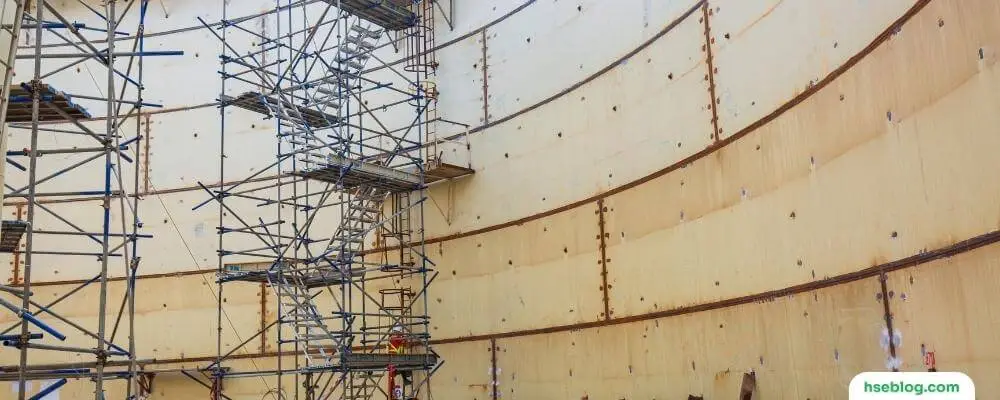
9. Load and Support Inspection
You also need to check that all weight-bearing and supportive elements of the scaffold, including beams, braces, and supports, can withstand the intended load. Look for signs of stress or overloading, such as bending or cracking in the scaffold’s structure. Importantly, the scaffold should not be modified or altered without consulting a professional scaffold engineer, which could affect its load-bearing capacity.
10. Safety Measures
All safety measures should be in place on the scaffold. This includes guardrails and toe boards to prevent falls and falling objects. A fall arrest system, such as safety harnesses or safety nets, should also be in place and used by workers on the scaffold. If required by local regulations or the scaffold’s height, safety netting should be installed around the scaffold to catch any falling debris or tools.
11. Tagging and Reporting
Once the inspection is completed, a tagging system should update the scaffold’s safety status. A green tag indicates the scaffold is safe to use, while a yellow tag means some issues must be addressed before the scaffold can be used safely. A red tag signifies that the scaffold is unsafe and should not be used under any circumstances. This tagging system makes it easy to understand the scaffold’s safety status. After tagging, prepare a detailed inspection report, noting any issues found and actions taken or required. This report should be kept for record-keeping and future reference.
After the tagging, record your findings in a report, outlining any defects or risks you’ve identified, any rectification actions taken, and what further actions are needed.
It’s essential to remember that scaffolding inspections should be regular (at least weekly) and after any event that could impact the scaffold’s stability (like a storm or earthquake). Additionally, a pre-use check should be performed daily or before each shift.
The inspection must be thorough and systematic. It should be done by a competent person who understands the risks associated with scaffolding and can identify the signs of wear and damage that could lead to structural instability or failure. Safety on a scaffold also depends on the behaviour and awareness of the workers. Proper training in scaffold use, including understanding load limits, using personal protective equipment (PPE), and recognizing potential hazards, should be provided to all workers.
Conclusion
Inspecting scaffolding is not merely a regulatory obligation but a critical safety measure in the construction industry. Following a structured, comprehensive procedure can identify and mitigate potential hazards before they result in serious incidents. Conducting these inspections with care and diligence, and understanding their importance, contributes significantly to maintaining a safe working environment. Ensuring the integrity and safety of scaffolding is an investment in the well-being of every individual on a worksite and is an indispensable part of effective health and safety practices.

